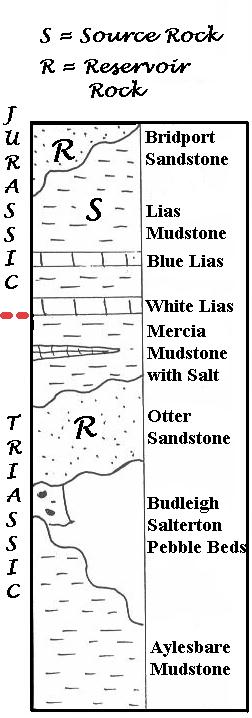| This web page is an interpretation of the petroleum reservoir
rocks of the Sherwood Sandstone Group.
The study area is an E/W trending outcrop along the coast at Sidmouth (120m long and about 10m high). Access to the outcrop is possible by a promenade that runs along the base of the outcrop. The outcrop consists of a Triassic sandstone body consisting of aeolian and fluvial sediments and is regionally known as the "Otter Sandstone". This unit is a reservoir rock in the subsurface about 100 km to the east within the Wytch farm oil field - which is the biggest onshore oil field in Europe. It is situated on the Southern coast of England just NW of the Isle of Wight. The Sherwood Sandstone Group lies within the post Variscan depocentre of the Wessex Basin and is divided into the early Budleigh Salterton Pebble beds, which is a 20 - 30m thick formation of conglomerates and sandstones (Smith& Edwards, 1991), which is not seen at Sidmouth and the Otter Sandstone Formation, which consists of fluvio-aeolian deposits, which are about 120m thick. The sequence is broadly upward fining with increasing mud content. |

Stratigraphic column (Lacroix, 1999) |
![]()
 |
Page constructed by M. Wheeler
Copyright © 2000 Mark J Wheeler